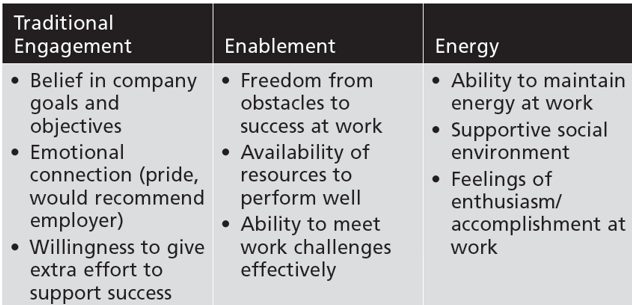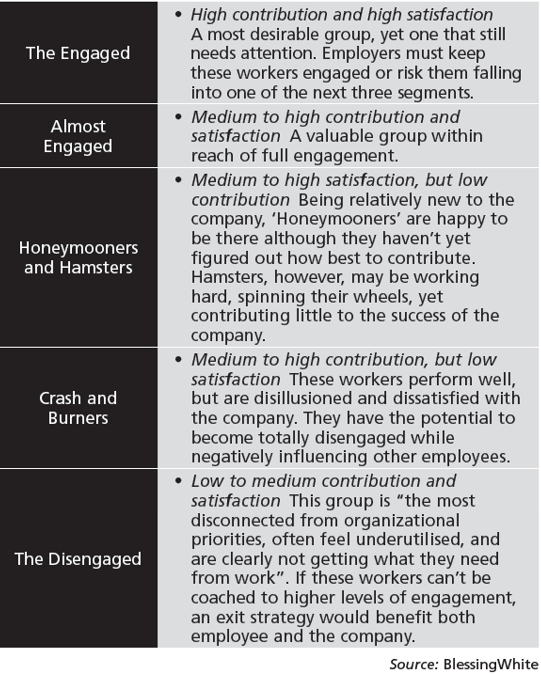Chalk and Cheese…
“Put your tray on the belt when you are finished with it and slide it back through.”
No response from the intended target of the shouting.
“SIR, put your tray on the belt when you are finished with it and slide it back through.”
Still no response from the target. And even the shouter’s colleagues looked somewhat bemused by his behaviour at this point, judging by the glances shot between them and the numbers of eyes thrown to heaven.
This is going to get interesting, I thought as I put back on my belt, shoes, watch and jacket before starting to pack my laptop into my carry-on bag.
“Are you DEAF, Sir?”
The intended target finally looks up.
“Are you talking to me?” he asked with all the menace that Travis Bickle used as he stared into the mirror in the movie Taxi Driver.
I didn’t have time to stick around to see how it all ended as my own flight was being called and I had to dash to the gate, but I was totally with my fellow passenger on this one. It was very early in the morning, everyone was tired, and this security guy was just standing around barking orders at people; moments earlier, as I waited to go through screening, he had snapped at an elderly lady because she had forgotten about a little bottle of holy water in her handbag. Everyone in the queue watched as, in a hectoring tone, he lectured someone who was old enough to be his grandmother. He was clearly unhappy in his job and definitely in the wrong career.
In contrast, no more than half an hour later I was being welcomed onboard in a pleasant and friendly tone by the cabin crew who were no-doubt equally as exhausted.
Chalk and cheese.
The two incidents got me thinking about how individual employee performance can fluctuate greatly. Although the two people in question were working for different organisations and were employed in very different roles, it was clear that they were not at the same level of performance. You will have had similar experiences in managing your own people, maybe not to the same degree of fluctuation, but some of your team members will outshine others in terms of both the way they do their jobs, and the results they achieve. In attempting to get the most from all staff, which no doubt is a pressing priority for you just now, we often treat them as a homogenous unit when in fact they are individuals with varying levels of performance.
Most companies these days have advanced systems and procedures for marketing to their customers and, as part of this, managers fully understand that segmenting their consumer base is essential because they know that there is no such thing as a ‘typical’ customer. Rather, there are different types that can be grouped or segmented according to their common needs, preferences, behaviours and in terms of what they deliver to the business (high and low value, etc.). This concept, amongst other things, allows owners and managers to better focus their marketing efforts and can also help to tailor products and services to each specific segment. Segmentation can also be applied to an organisation’s employees.
1. Segmenting Employees
What I mean here is segmenting employees in a structured manner according to performance, and not just with the broad brushstrokes that you probably use at present, as in full- or part-time, length of service, good and bad, or other general criteria. I mean really applying segmentation in a formal way with the same objective you have for your customers, namely, to better identify and then respond to their needs. I believe there is significant scope for all businesses to think more intensely about the different segments of employees and then tailor what is offered to them.
Before continuing, you may well be concerned that if you do start to segment your people more formally, you may risk being accused of favouritism. And, yes, if you make the wrong choices here then that is a possibility; however, segmenting employees does not mean treating some well and others badly; it means giving them what they want and need in terms of their employment experience, just as you do for your customers’ experience. For example, when it comes to your customers, giving your top performing segments something extra doesn’t mean you treat lower producing categories badly, does it? In my experience, very few managers acknowledge that the concept of segmentation can apply equally as well to employees and, if done correctly, can make a valuable contribution to engagement levels and business performance.
When you think of it, however, no matter how big or small your team is, there is no such thing as a ‘standard’ employee in terms of their performance, is there? They each have differing interests, values, behaviours and are motivated by different things and, as a consequence, the contribution they make to the organisation also varies, often considerably. For instance, if you have an employee who is relatively happy in their job, works reasonably well, does what is expected of them but no more, and has no real passion for the business, can they be motivated and engaged to the same extent as an ‘in a hurry’ go-getter who consistently walks that extra mile for you? Probably not. Should their overall employment experience every day be the same? Hardly.
So, how might you set about segmenting employees in a way that adds value to your business? Well, first, as with customers, it is simply not possible for you to meet the precise and ongoing needs of each employee, so segmentation is really a form of compromise which allows you to capture the common needs and expectations of different groups of employees into a small number, say four or five, segments. And what might those segments be? There are no set rules here, and you probably mentally segment your employees by performance to some degree already, but just as you did when you categorised your customer base, you need to focus on some relevant criteria which allow you to create definable segments that:
are distinct and recognisable from the wider group of employees;
can be targeted individually;
have longevity – of course, employees will come and go but the ‘segment’ must have permanence. As an example of different approaches in this area, Towers Watson (now WTW), a leading global professional services company with expertise in employee engagement, promotes the concept of ‘Sustainable Engagement’. This describes the intensity of employees’ connection to their organisation, based on three core elements:
The extent of employees’ discretionary effort committed to achieving work goals (being engaged)
An environment that supports productivity in multiple ways (being enabled)
A work experience that promotes well-being (feeling energised)
The key attributes fundamental to each element of sustainable engagement are:
Figure 1: Elements of Engagement
Based on a statistical analysis of their employee engagement surveys, Towers Watson categorise respondents into four distinct segments, as shown below:
Figure 2: Towers Watson Employee Segments
Further details of these segments include:
Highly engaged: Those who score high on all three aspects of sustainable engagement.Unsupported: Those who are traditionally engaged but lack enablement or energy for complete engagement.
Detached: Those who feel enabled and/or energised but lack a sense of traditional engagement.
Disengaged: Those with less favourable scores on all three aspects of sustainable engagement.[1]
As a second example of a route to segmentation, BlessingWhite,[2] another international expert in this area, describes five employee segments that vary according to an individual’s level of contribution to a company’s success combined with his or her job satisfaction:
These are just two examples of how the segmentation of employees could be addressed in your organisation. You might adopt a different approach more suited to your needs – and, if you do, make it as simple as you like to start with.
In terms of helping to identify segments (and indeed in defining where each employee fits) a useful tool for providing the necessary information can be an employee satisfaction or engagement survey (see www.dobiquity.com for a best practice engagement survey tool), but how helpful that is for you will naturally depend upon what questions it includes and, if you already conduct such surveys, what information it currently provides you with. Another mechanism to facilitate individual segmentation can be the company’s appraisal process and again if that is well thought through and rigorous, it can assist you in identifying even basic employee segments, such as a scale with top performers at one end of the spectrum and under-performers at the other.
It is also worth noting that, like any business, you will have the odd outright negative employee, but I personally would not formalise them as a ‘segment’ because, as mentioned above, a segment should have longevity and you certainly shouldn’t tolerate negative employees over the longer term. Remember, a ‘low performer’ or a ‘disengaged’ employee is different from a consistently bad performer who is likely having a damaging impact.
Once you have defined segments of employees appropriate for your business, what then?
2. The Employee Value Proposition
With employee segments defined, you then want to get a handle on what works best for each of those segments in terms of the overall employment experience you provide, and this is where the Employee Value Proposition (EVP) comes in. EVP relates to the totality of the employment experience available at any given company. It is about much more than wages and benefits and includes culture, development opportunities, rewards, leadership, teamwork, and so on. In fact, EVP is concerned with everything that impacts on the experience an employee has whilst working for your business.
A good way to view EVP is to consider it as being the deal you make with your people: what you will offer them in return for their skills, knowledge, experience, dedication, and hard work. Again, we are quite comfortable talking about value propositions in relation to customers but applying that principle to employees doesn’t always meet with the same degree of acceptance by employers. This can result from a fear that, as some managers have said to me, being seen to ‘pander’ to employees will lead them to believe that they hold all the cards in the relationship. Those concerns are perhaps understandable to a degree but it isn’t about pandering and this is very much a two-way street; the EVP is what you offer your employees in return for what they give you. It’s a trade-off, and it’s a worthwhile one because your business benefits by keeping your top performers for longer and having them more engaged and productive.
Focusing on a value proposition for employees is also recommended because it forces you to think in broader terms of creating worth for people across the entirety of their work experience, rather than just concentrating on individual components such as wages, benefits, perks, etc. The concept of EVP is not new, but at a time when budgets and resources are tight within most businesses it can be more challenging to plan for and develop.
How can you develop/improve your organisation’s EVP?
First, let’s look at some research about EVP. According to the Corporate Executive Board (CEB) in the US which has studied this area extensively,[3] “an effective EVP provides organisations with three quantifiable benefits:
Improved attractiveness: Companies and organisations that have defined and meaningful EVPs can source employees from a much wider pool of talent. For example, the top performing companies, i.e., those with the most effective EVPs, can draw candidates from about 60% of the labour market, including ‘passive’ candidates who would otherwise be content to stay with their current job. Lesser-performing organizations are able to source only from the most active 40% of the labor market.
Greater employee commitment: Organizations with effective EVPs enjoy significantly higher levels of commitment from their employees. In fact CEB indicates that in those organizations with really effective EVPs, 30–40% of their workforce display high levels of commitment, compared to less than 10% in under-performing organizations.
Compensation savings: Organizations with effective EVPs can reduce the compensation premium required to attract new candidates. Top-performing organizations are able to spend 10% less on base pay compared to under- performing organizations.”
You don’t need to be an expert in human resource management to understand that employees, particularly those in the top percentile, will migrate towards those companies offering the best proposition or overall package. In terms of formalising your company’s EVP, or building on the one you have, there is no one-size-fits-all approach, but you can consider the attributes shown in the table below as you seek to create a compelling EVP.
Clearly you will already have some type of an EVP in place, every business does to some degree, although you may not call it that, or indeed have communicated it as effectively as you might. As you seek to better defi ne your EVP, or to expand on what you already have, some steps to consider include:
Identify the Most Attractive EVP Elements Generally, and by Employee Segment
Th e first step in building or expanding your EVP is to be very clear as to what matters most to the type of people you are seeking to recruit and retain; you therefore need to defi ne what elements of the EVP are most attractive for all employees generally and then for each of the segments you define. And just as you do with customers, use focus groups with members from each employee segment to determine what they feel would help to engage them more with the business.
Conduct an Assessment of your Current EVP
Once you have a clearer picture of what matters to your employees, it’s a good idea to compare your current offering to see how it stacks up. As you do so, consider:
what your organisation’s current strengths are in terms of an EVP;
whether you are currently meeting employee expectations with the EVP you offer, especially in relation to your competitors;
how well you currently tailor your EVP to the variety of employees you have;
which EVP components best reflect your strategic focus and business ethos; and
what is practical and sustainable over the long term with regard to an EVP.
Build the EVP and Communicate it Effectively
From your research and analysis on this issue, you will have garnered the information you need to develop your EVP in a manner which best matches the expectations of all employees in the organisation, and each segment, but that also aligns to your strategic vision for the business. Remember, even applying the EVP model, every employee is still treated fairly and in accordance with all employment legislation requirements, but you will tailor certain aspects of the experience such as training, rewards, delegation, etc. and other components of the EVP in order to best match the expectations of different employee segments.
It’s then a matter of communicating that EVP and its component parts to prospective and existing employees. This may sound like an obvious step, but even in small companies. employees are frequently unaware of some of the benefits potentially available to them; there is no point in having a compelling EVP if nobody knows about it. As part of that communications process, it can be useful to develop a summary statement that captures the essence of your EVP, or better still build such sentiments into your existing mission statement. Of course, it goes without saying that you must subsequently deliver on the EVP you communicate; failure to do so will lead to lower engagement levels and ultimately higher turnover.
When you pay attention to the subject of recruiting and retaining employees, you will frequently see it described as a ‘war for talent’. Finding and keeping the best people is extremely hard today, and getting harder, so if you want your organisation, department, or team to outperform the norm then you cannot ignore the role your employees will play in achieving that goal. Consequently, you should not overlook the benefits that could arise if you define clear employee segments, then create and communicate a compelling and segment-tailored EVP which attracts the right people, enhances their engagement levels, raises productivity and reduces employee turnover.
And in doing so, bear in mind that what works for chalk won’t necessarily have the same impact on cheese.
References:
[1] Towers Watson, “Engagement at Risk: Driving Strong Performance in a Volatile Global
Environment” (Global Workforce Study), p 5.
[2] BlessingWhite, Beyond the Numbers: A Practical Approach For Individuals, Managers, and Executives. Blessingwhite Employee Engagement Report.
[3] CEB, Attracting and Retaining Critical Talent Segments, Building a Competitive Employment Value Proposition: Executive Summary, Arlington VA.





